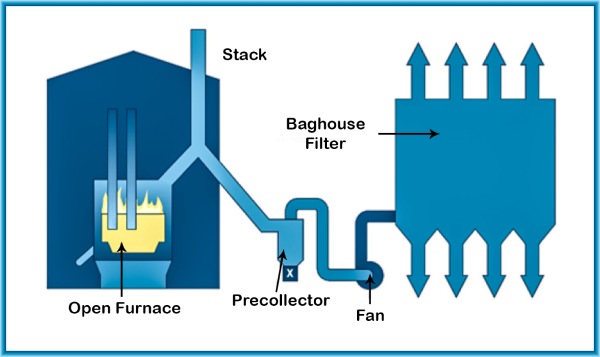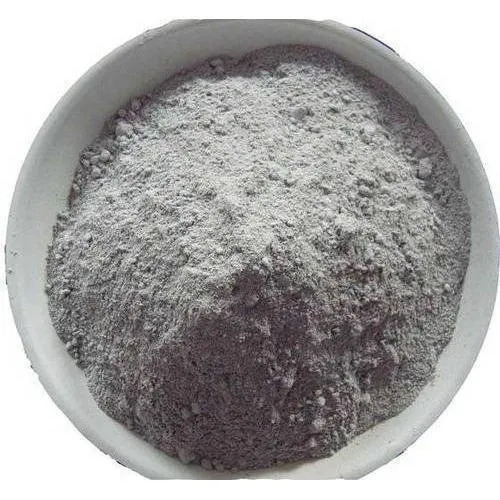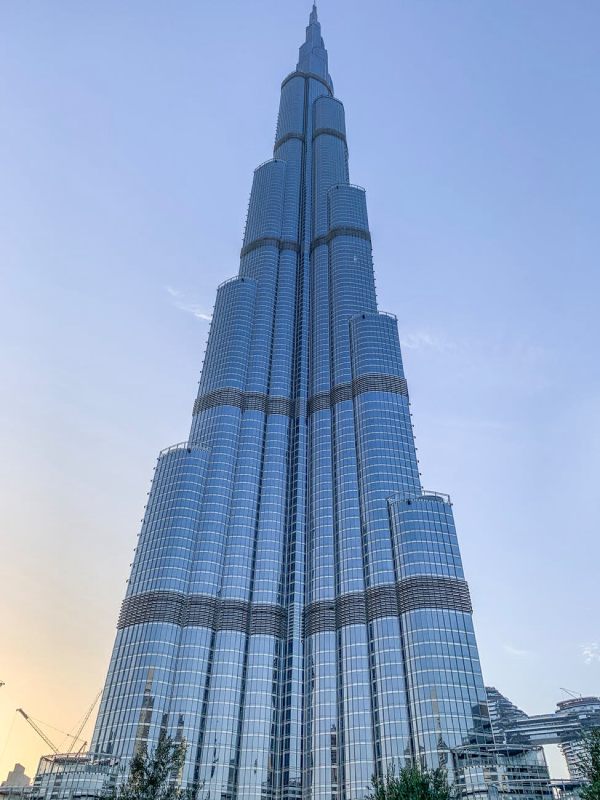Micro silica is an amorphous polymorph of silica (SiO2 / silicon di-oxide). It is also known as silica fume or condensed silica fume. It is an ultrafine powder collected as a by-product during the production of the silicon and ferrosilicon alloys. It consists of spherical particles having an average diameter of 150nm. The main field application is as pozzolanic material for high performance concrete.
It is uniquely pure and efficient. When used as an additive for the concrete, micro silica dramatically improves the durability and shelf life of concrete, thus saving the maintenance costs.

When added to the concrete mix, a small dose of micro silica introduces millions of tiny silicon dioxide particles into the concrete. It fills the gaps in wet concrete mixture and reacts chemically with the Portland cement. The result is a hardened compact concrete with greatly improved strength and durability.
Production of Micro Silica
According to ‘A.M. Neville’ (Author of the Properties of Concrete), micro silica is a by-product obtained during the manufacturing of silicon and ferrosilicon alloys in a submerged-arc electric furnace. These alloys are produced from high-purity quartz and coal. Silica fume is also collected as a by-product during the manufacture of other silicon alloys such as ferrochromium, ferromanganese, Ferro magnesium, and calcium silicon.
Silicon is an element that is found in large quantities in most rocks but never in a pure state. Approximately 26% of the earth’s crust is made up of silicon. Quartz is one of the rocks that contain high amounts of silicon, but it is strongly combined with oxygen. The raw materials that normally goes to the smelter are metallurgical grade quartz, coke, wood chips and coal. The mixtures are transported to the furnace silo and then directly downed into the furnace via rotating charging tubes that distribute the mixture around the electrodes in the furnace.
The mixture is heated to more than 2000°C by three large electrodes. At this temperature, the oxygen in the quartz is released in a reduction process and it recombines with the carbon. It oxidizes and condenses in the low temperature zone to tiny particles, consisting of non-crystalline Silica. The production of silica fume requires a huge electrical power. 11,000 kilowatt hours are required in order to produce one ton of pure silicon.

Production of Micro Silica
Refining of the silicon is performed by adding oxygen to the melt through the bottom of the refining label. When the refining process is completed, the silicon is cast in large iron chills. Casting is an important part of the production because it is vital that the slag produced by the refining process remains in the refining label. The presence of even a small amount of slag may spoil the quality of the final product.
When the ingots have cooled, they are crushed to the desired size, filled in containers and transported to the customer. Efficient filtering removes almost all the dusts from gases emitted from the furnaces. This dust consisting of tiny particles of silica is the micro silica and is proved to be very useful for various purposes, for example, as an additive to concrete.

Micro Silica
Mixing and Placing Considerations
Handling Micro Silica
Owing to its extreme fineness, micro silica presents handling problems. A cement tanker that could ordinarily haul 35 metric tons of cement accommodates only 7 to 9 tons of dry micro silica and requires 20 to 50% more time for discharging.
Water Requirement of the Mix
When no water reducing agents are used, the addition of micro silica to a concrete mix requires more water to maintain a given slump. In order to avoid using excess water, a water reducer or super plasticizer is used along with the micro silica.
Placing, Finishing, and Curing
The gel that forms during the first few minutes of mixing micro silica stiffens the mixture. It is necessary to finish the concrete and apply a curing compound or cover instantly. Various effects have been reported differently with lean concrete mixes or mixes having fly ash replacement for cement.
Properties of Micro Silica
- The diameter of a silica fume particle ranges from 100 to 200nm.
- Its particles are spherical in shape.
- The density of condensed silica fume required to be used as an additive in concrete must be about 500 to 700 kg/m3.
- It contains 85 to 97% of silicon dioxide.
- The other constituents present in micro silica are carbon, sulphur along with the oxides of aluminium, iron, calcium, magnesium, sodium and potassium.
- Replacing the cement with about 10% silica fume subsequently results in the increase of compressive strength of the concrete.
- Reinforcement corrosion is greatly reduced due to increased resistivity, high tensile strength and less permeability.
Effects of Silica Fume on Concrete
01. Pozzolanic Effect
According to ‘Verma Ajay et al.’ (Published in Research Journal of Engineering Sciences), when water is added to ordinary Portland cement, hydration of concrete takes place resulting in the formation of the following products:
OPC + H2O → CSH + Ca (OH)2
In the presence of silica fume, the silicon dioxide reacts with the calcium hydroxide to form more aggregate binding CHS (Calcium silicate hydrate) which is as follows:
Ca (OH)2 + SiO2 + H2O → CSH
The reaction diminishes the amount of calcium hydroxide in the concrete. This is helpful as a weaker calcium hydroxide does not impart any strength to the concrete. When it is combined with carbon dioxide, it forms a soluble salt which will leach through the concrete causing efflorescence, a familiar architectural problem. When high amount of calcium hydroxide is added to the concrete, the concrete becomes more vulnerable to sulphate attack, chemical attack as well as adverse alkali-aggregate reactions.
02. Micro Filler Effect
According to ‘Md Athar Kazmi et al.’ (Published in International Journal of Science and Research (IJSR)), micro silica is a finer material, approximately 100 times finer than cement in terms of average diameter. By adding nearly 8% of cement by weight, approximately 100,000 particles for each particle of cement will fill up the water spaces in fresh concrete. This eliminates bleeding and weak transition zone between aggregate and concrete paste. This micro filler effect greatly reduces permeability and improves paste-to aggregate bond in silica fume concrete compared to conventional concrete. The reaction of silica fumes is rapid, providing high strength and durability at an early stage. In terms of efficiency of silica fume, it is 3-5 times more than that of OPC and simultaneously performance of concrete can also be drastically improved.
03. Effects on Air Entrainment of Fresh Concrete
The dosage of admixtures such as the air- entraining agents required to maintain the desirable air content while using micro silica is slightly higher than that required for conventional concrete. This is because of the high surface area in addition to the presence of carbon. Hence, the dosage of air entraining agents is increased with increasing amounts of micro silica content in concrete.
04. Effects on Water Requirements of Fresh Concrete
On adding silica fume to concrete, there is an automatic increase in water demand. This often results in requiring one additional pound of water for every pound of silica fume added. This issue can easily be solved by using High range water reducers (HRWR).
05. Effects on Consistency and Bleeding of Fresh Concrete
Adding more than 10% of silica fume in concrete induce stickiness in concrete. Therefore, in order to enhance the workability of concrete, the initial slump should be increased. It has been observed that condensed silica fume reduces the bleeding of concrete because of its effect on the rheological properties.
Applications of Micro Silica
Micro silica concrete is generally used to achieve following properties,
01. Corrosion Resistance
According to ‘Umesh Sharma et al.’ (Published in International Journal of Civil Engineering Research), the reduced permeability of micro-silica provides protection against intrusion of chloride ions thereby increasing the time taken for the chloride ions to reach the steel bar and initiate corrosion. In addition, micro-silica concrete has much higher electrical resistivity compared to OPC concrete thus slowing down the corrosion rate. This combined effect increases the life of a structure by 5 – 10 times.
02. Sulphate Resistance
Silica fume concrete has a low susceptibility for penetration by sulphate ions and a high chemical resistance that provides a higher degree of protection against sulphates than low tricalcium aluminate (C3A) and other sulphate resisting cements or fly ash and other cementitious binder systems.
03. Heat Reduction
By replacing cement with condensed silica fume and observing its efficiency factor, a lower maximum temperature rise and temperature differential will take place for concrete with the same strength. The performance is better in comparison to slag and fly ash blends in case of thick sections. It is also proved to be the most effective way of achieving low heat concrete without compromising the strength at an early age.
04. Abrasion Resistance
Abrasion resistance of Silica fume concrete is very high. The use of silica fume concrete in floor and pavement construction saves time and money. It also improves the operational efficiency for the facility operator. The hydraulic abrasion-erosion resistance of concrete is enhanced which makes it perfectly suitable for the construction of dam spillways.
05. Chemical Resistance
Micro silica concrete finds a wide application in industrial structures that are exposed to an array of aggressive chemicals. In the alimentary industry, there is over exposure due to fat acids, other acids and detergents, etc. Where as in the chemical industry, the exposure is to mineral acids, phosphates, nitrates, petrochemicals, etc. Therefore, it is invaluable in both industrial and agricultural sectors.
06. Micro Silica Waterproof Concrete
Since it has low permeability, silica fume can be used as an integral waterproof concrete for underground structures where some dampness is expected. For example, they can be used in car parks, basements etc.
07. High Strength Concrete
Condensed silica fume in conjunction with super plasticizers can be used to produce very high strength concrete about 70 Mpa to 120 Mpa. High strength concrete imparts huge economic benefits to the developers with reduced column and wall thickness in tall buildings and improvement of construction schedule. Alkyl micro silica was used to achieve high strength and high-performance concrete for construction of the tallest buildings in the world such as the Burj Khalifa in Dubai.

Burj Khalifa Constructed Using Micro Silica Concrete
08. Shotcrete
Shotcrete is a process of applying or spraying of concrete or mortar on the element or surface by pneumatic pressure with high velocity to give a very dense durable concrete or mortar layer. It is also known as air blown concrete or mortar.
Micro silica concrete can be used in shotcrete, produced by either wet or dry processes. It increases the application thickness per mass and improves resistance to washout in marine construction or wet areas. It also improves the properties of hardened Shotcrete.
09. Tunnel and Mining Operations
In tunnel and mining operations, application of silica fume is popular in a variety of ways. In sprayed concrete mixtures, particles of micro silica make concrete mixtures more cohesive by reducing rebound and wastage.
10. Bridge Construction
Several of the longest sea bridges in the world use silica fume as it reduces permeability of concrete as well as increases the resistance to sulphates, chloride ingress and reinforcement corrosion.

Bridges Constructed Using Silica Fume Concrete
Advantages of Micro Silica
When micro silica is added to ordinary cement, it enhances the below mentioned properties of concrete:
- Bond improvement
- Lesser heat of hydration
- Reduction of alkali aggregate reaction
- Enhanced compressive strength
- Reduced permeability
- Minimizes the bleeding
- Reduces segregation of concrete
- Improves the durability of concrete
- Makes the concrete more cohesive
Disadvantages of Micro Silica
- Its price is higher in comparison to cement and fly ash.
- It increases the shrinkage of the cement slurry, which increases the risk of cracking.
- Since the workability of silica fume concrete is less, the application becomes difficult. In this case, uniformity of surface is compromised.
If you want to know more about its advantages and disadvantages, the effect of silica fume on the properties of concrete etc., then you may read Silica Fume (Micro Silica): Pros-Cons & Effect on Properties of Concrete.
Summing up, Micro silica or silica fume is a good pozzolanic material which increases the strength and durability of concrete. It decreases the voids, capillaries and makes a dense concrete matrix. As a byproduct, silica fume is used to make green concrete and leads to sustainable development. It is also used in different types of construction for various purposes such as high strength, shotcrete, heat reduction, the resistance to corrosion, sulphate, abrasion, chemical etc.
Also Read:
Pozzolanic or Mineral Admixtures! Eco-Friendly and Inexpensive Cementing Material
8 Eco Friendly Building Materials Utilised in Green/Sustainable Buildings!
Sustainable Architecture: A New Design Approach for Buildings!
Image Courtesy – Image 02 – amazonaws, Image 03
Arfa Falak – My name is Arfa Falak and I have my graduation in BE (civil). I live in Bangalore. I am an aspiring design Engineer.



